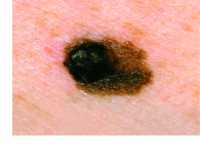Use of IV Fluids by EMTs Reduced Morality in Septic Patients With Low Blood Pressure
MedicalResearch.com Interview with: Daniel J. Lane PhD
Daniel J. Lane PhD
Institute of Health Policy, Management and Evaluation
Dalla Lana School of Public Health, University of Toronto
Rescu, Li Ka Shing Knowledge Institute, St Michael’s Hospital
Toronto, Ontario, Canada
MedicalResearch.com: What is the background for this study? What are the main findings?
Response: Early resuscitation and early antibiotics have become the mainstay treatment for patients with sepsis. The time to initiation of these treatments is thought to be an important factor in patients surviving their disease; however, the independent benefits or harms of intravenous fluid resuscitation, in particular a more aggressive versus more conservative approach to this therapy, remains difficult to evaluate given the concurrent use of these therapies in hospital.
To gain a better understanding of this treatment independent of antibiotic use, we assessed intravenous fluid resuscitation by paramedics on the in-hospital mortality of patients with sepsis. By accounting for the interaction between initial systolic blood pressure and the treatment, we found that earlier resuscitation by paramedics was associated with decreased mortality in patients with low initial blood pressures but not associated with mortality for patients with normal or higher initial blood pressures.
Mediterranean Diet Linked to Lower Long-Term Cardiovascular Events in Women
Younger Siblings of Children with Autism or ADHD More Likely To Be Similarly Diagnosed
After Menopause, High Body Fat Associated with Doubled Risk of Estrogen+ Breast Cancer
Diversity Standards Linked to More Female, Black and Hispanic Students in Medical Schools
Accreditation standards may be an effective policy lever to increase diversity in the physician workforce. ...
RAS Inhibitor Linked to Reduced Heart Failure and Mortality After TAVR
Computer Simulation Study Favors Tomosynthesis over Digital Mammography
 Aldo Badano, Ph.D.
Deputy Director, Division of Imaging, Diagnostics, and Software Reliability
Office of Science and Engineering Laboratories
Center for Devices and Radiological Health Silver Spring, MD 20993
MedicalResearch.com: What is the background for this study? What are the main findings?
Response: Expensive and lengthy clinical trials can delay regulatory evaluation of innovative technologies, affecting patient access to high-quality medical products. Although computational modeling is increasingly being used in product development, it is rarely at the center of regulatory applications.
Within this context, the VICTRE project attempted to replicate a previously conducted imaging clinical trial using only computational models. The VICTRE trial involved no human subjects and no clinicians. All trial steps were conducted in silico. The fundamental question the article addresses is whether in silico imaging trials are at a mature development stage to play a significant role in the regulatory evaluation of new medical imaging systems. The VICTRE trial consisted of in silico imaging of 2986 virtual patients comparing digital mammography (DM) and digital breast tomosynthesis (DBT) systems.
The improved lesion detection performance favoring DBT for all breast sizes and lesion types was consistent with results from a comparative trial using human patients and radiologists. (more…)
Aldo Badano, Ph.D.
Deputy Director, Division of Imaging, Diagnostics, and Software Reliability
Office of Science and Engineering Laboratories
Center for Devices and Radiological Health Silver Spring, MD 20993
MedicalResearch.com: What is the background for this study? What are the main findings?
Response: Expensive and lengthy clinical trials can delay regulatory evaluation of innovative technologies, affecting patient access to high-quality medical products. Although computational modeling is increasingly being used in product development, it is rarely at the center of regulatory applications.
Within this context, the VICTRE project attempted to replicate a previously conducted imaging clinical trial using only computational models. The VICTRE trial involved no human subjects and no clinicians. All trial steps were conducted in silico. The fundamental question the article addresses is whether in silico imaging trials are at a mature development stage to play a significant role in the regulatory evaluation of new medical imaging systems. The VICTRE trial consisted of in silico imaging of 2986 virtual patients comparing digital mammography (DM) and digital breast tomosynthesis (DBT) systems.
The improved lesion detection performance favoring DBT for all breast sizes and lesion types was consistent with results from a comparative trial using human patients and radiologists. (more…)Wisdom Teeth Extractions Can Lead to Opioid Addiction in Adolescents and Young Adults
Polycystic Ovary Syndrome Linked to Increased Risk of Some Cancer Types
Majority of Patients Withhold Important Information From Their Health Care Providers
Machine Learning Program Superior to Humans in Non-Pigmented Skin Lesions
Chronic Kidney Disease Rate Rising Faster Than Other Noncommunicable Diseases
USPSTF: Interventions to Prevent Child Maltreatment
What are the Patient Preferences that Determine Chose of Bariatric Surgery?
Stroke: Cerebellar Stimulation Improved Motor Function
Use of Biosimilar Growth Factor Increases in Supportive Cancer Care
Second Generation 3-Drug Combination Found Safe & Effective for Newly Diagnosed Multiple Myeloma
Cardiology Articles Pertaining to Lifestyle and Nutrition Receive Most Media Attention
Novel Use of Tazarotene Gel To Treat Acne Scarring
Risk Factors for Melanoma in Women
Almost Half of US Adults Get No Leisure Time Physical Activity in Typical Week
Serious Mental Illness Raises Risk of 30 Day Readmission
Obesity Threat to Health of Individuals and Populations May Be Underestimated
Primary Care Providers Should Ask All Adults About Alcohol Use
Obesity Strongly Related to Coronary Artery Disease and Diabetes
 Haris Riaz MD (Cardiology Fellow
Haitham Ahmed MD, MPH , Preventive Cardiologist,
Cleveland Clinic, Ohio
MedicalResearch.com: What is the background for this study? What are the main findings?
Response: Elevated cholesterol (specially low density lipoprotein) has been causally linked to the development of coronary artery disease whereas the causal relationship between obesity and cardiovascular disease has remained controversial. This is important because of increasing epidemic of obesity and metabolic syndrome. Mendelian randomization studies provide one way of determining a causal association where we can look at the outcomes of individuals stratified by the presence or absence of a particular allele. Since these alleles are randomly distributed in the population of interest, this is "nature's randomized trial" in that the particular allele is naturally distributed and hence minimal risk of bias.
In other words, lets say that I hypothesize that a particular gene "A" is linked with coronary artery disease. If the given gene is indeed causally linked with coronary artery disease, patients with activation of that gene should have significantly greater risk of developing coronary artery disease.
Based on these principles, we conducted a systematic review and meta-analysis of the available evidence and found that the risk of developing coronary artery disease and diabetes is significantly increased with obesity. Although hypothesis generating, we think that these findings may suggest a causal association between obesity and cardiovascular disease. (more…)
Haris Riaz MD (Cardiology Fellow
Haitham Ahmed MD, MPH , Preventive Cardiologist,
Cleveland Clinic, Ohio
MedicalResearch.com: What is the background for this study? What are the main findings?
Response: Elevated cholesterol (specially low density lipoprotein) has been causally linked to the development of coronary artery disease whereas the causal relationship between obesity and cardiovascular disease has remained controversial. This is important because of increasing epidemic of obesity and metabolic syndrome. Mendelian randomization studies provide one way of determining a causal association where we can look at the outcomes of individuals stratified by the presence or absence of a particular allele. Since these alleles are randomly distributed in the population of interest, this is "nature's randomized trial" in that the particular allele is naturally distributed and hence minimal risk of bias.
In other words, lets say that I hypothesize that a particular gene "A" is linked with coronary artery disease. If the given gene is indeed causally linked with coronary artery disease, patients with activation of that gene should have significantly greater risk of developing coronary artery disease.
Based on these principles, we conducted a systematic review and meta-analysis of the available evidence and found that the risk of developing coronary artery disease and diabetes is significantly increased with obesity. Although hypothesis generating, we think that these findings may suggest a causal association between obesity and cardiovascular disease. (more…)Adults with Down’s Syndrome at High Risk of Alzheimer’s Disease
 Rosalyn Hithersay
LonDowns
Kings College, London
MedicalResearch.com: What is the background for this study? What are the main findings?
Response: In our research group, we have been following a large group of adults with Down syndrome in the UK to track changes with ageing in their health and cognitive function. It has been known for some time now that people with Down syndrome are at high risk for developing dementia due to Alzheimer’s disease. This new study has shown the huge impact that this risk has on mortality for these adults.
We found that dementia is now the likely underlying cause of death in more than 70% of adults with Down syndrome aged over 35 years. This is a much bigger proportion of deaths due to Alzheimer’s disease compared to the general population: in England and Wales only 17.5% of deaths past the age of 65 would be related to dementia of any kind. (more…)
Rosalyn Hithersay
LonDowns
Kings College, London
MedicalResearch.com: What is the background for this study? What are the main findings?
Response: In our research group, we have been following a large group of adults with Down syndrome in the UK to track changes with ageing in their health and cognitive function. It has been known for some time now that people with Down syndrome are at high risk for developing dementia due to Alzheimer’s disease. This new study has shown the huge impact that this risk has on mortality for these adults.
We found that dementia is now the likely underlying cause of death in more than 70% of adults with Down syndrome aged over 35 years. This is a much bigger proportion of deaths due to Alzheimer’s disease compared to the general population: in England and Wales only 17.5% of deaths past the age of 65 would be related to dementia of any kind. (more…)Childhood Lazy Eye (Amblyopia) Linked To Lower Self Perception, Reading Speed and Motor Skills
 Eileen E. Birch, PhD
Director, Crystal Charity Ball Pediatric Vision Evaluation Center
Retina Foundation of the Southwest
Adjunct Professor of Ophthalmology
UT Southwestern Medical Center
MedicalResearch.com: What is the background for this study? What are the main findings?
Response: We previously reported that amblyopia, but not nonamblyopic strabismus or anisometropia, is associated with slower reading speed (Kelly et al Journal of AAPOS 2015) and that this is related to abnormal eye movements and unstable fixation associated with amblyopia (Kelly et al 2017). We have also shown that amblyopic children are slower at completing Scantron answer sheets (JAMA Ophthalmology 2018). We thought that these difficulties experiences in school-age children with amblyopia might affect their self-perception.
(more…)
Eileen E. Birch, PhD
Director, Crystal Charity Ball Pediatric Vision Evaluation Center
Retina Foundation of the Southwest
Adjunct Professor of Ophthalmology
UT Southwestern Medical Center
MedicalResearch.com: What is the background for this study? What are the main findings?
Response: We previously reported that amblyopia, but not nonamblyopic strabismus or anisometropia, is associated with slower reading speed (Kelly et al Journal of AAPOS 2015) and that this is related to abnormal eye movements and unstable fixation associated with amblyopia (Kelly et al 2017). We have also shown that amblyopic children are slower at completing Scantron answer sheets (JAMA Ophthalmology 2018). We thought that these difficulties experiences in school-age children with amblyopia might affect their self-perception.
(more…)Poor Health Insurance Literacy Linked to Avoidance of Health Care Services
 Renuka Tipirneni, MD, MSc
Assistant Professor
Holder of the Grace H. Elta MD Department of Internal Medicine Early Career Endowment Award 2019-2024
University of Michigan Department of Internal Medicine
Divisions of General Medicine and Hospital Medicine, and
Institute for Healthcare Policy & Innovation
Ann Arbor, MI 48109
MedicalResearch.com: What is the background for this study? What are the main findings?
Response: Navigating health insurance and health care choices is challenging and requires significant health insurance literacy (knowledge and application of health insurance concepts). We looked at the association between U.S. adults' health insurance literacy and avoidance of health care services due to perceived cost.
We found that 30% of people we surveyed reported delayed or foregone care because of perceived cost, and that those with lower health insurance literacy reported significantly greater avoidance of both preventive and nonpreventive health care services.
(more…)
Renuka Tipirneni, MD, MSc
Assistant Professor
Holder of the Grace H. Elta MD Department of Internal Medicine Early Career Endowment Award 2019-2024
University of Michigan Department of Internal Medicine
Divisions of General Medicine and Hospital Medicine, and
Institute for Healthcare Policy & Innovation
Ann Arbor, MI 48109
MedicalResearch.com: What is the background for this study? What are the main findings?
Response: Navigating health insurance and health care choices is challenging and requires significant health insurance literacy (knowledge and application of health insurance concepts). We looked at the association between U.S. adults' health insurance literacy and avoidance of health care services due to perceived cost.
We found that 30% of people we surveyed reported delayed or foregone care because of perceived cost, and that those with lower health insurance literacy reported significantly greater avoidance of both preventive and nonpreventive health care services.
(more…)






















